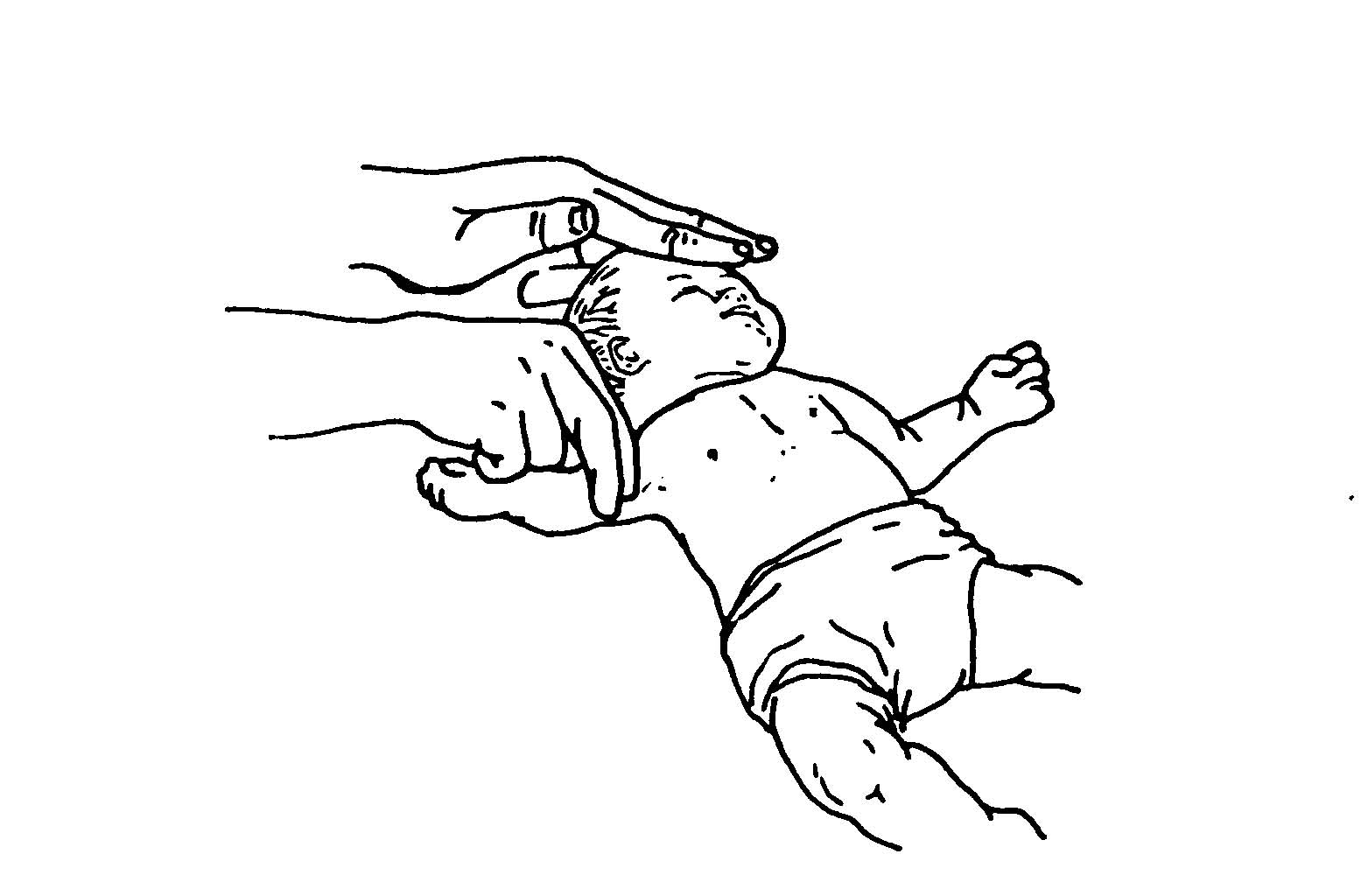Cardiopulmonary Resuscitation
Lesson 6: Perform Cardiopulmonary Resuscitation on a Child or Infant
6-5
6-5. CHECK FOR PULSE
If the casualty is a child, check for a pulse at the carotid artery (same location as in an adult). If the casualty is an infant, however, you may have trouble locating the carotid pulse due to the casualty's short, chubby neck. Therefore, the brachial artery is usually used to feel for an infant's pulse. The brachial pulse is taken on the inside of the casualty's inner arm between the elbow and the shoulder (figure 6-3). Use only two fingers (no thumb) to gently press on the artery. The check should take between 5 and 10 seconds. Continue to monitor the casualty for signs of spontaneous breathing as you check for a pulse.
Figure 6-3. Checking an infant for a brachial pulse.
a. If the casualty has an adequate pulse and has resumed breathing on his own, begin checking for other injuries. Bradycardia is a common terminal rhythm in infants and children; you should not wait for the absence of a pulse to begin chest compressions. If a child has a heart rate less than 60 beats per minute and is showing signs of poor systemic perfusion, you should begin chest compressions. Keep the airway open and monitor his breathing. Administer rescue breathing or CPR if he stops breathing. Evacuate the casualty to a medical treatment facility as soon as possible.
b. If you detect a pulse but the casualty still is not breathing, continue to administer ventilations.
(1) Child. Administer ventilations at the rate of one ventilation every 3 to 5 seconds (12 to 20 ventilations per minute).
(2) Infant. Administer ventilations at the rate of one ventilation every 3 to 5 seconds (12 to 20 ventilations per minute).
c. If you do not detect a pulse and no one has responded to your previous call for help, call for help again. If a telephone or radio unit is readily available, use it to summon additional medical help. In the pediatric patient, it is important to phone “fast” versus phoning “first” in the adult. Pediatric cardiac arrest is usually secondary to respiratory arrest, phoning “fast” may deliver adequate oxygen fast enough to the heart to prevent permanent damage. Then begin administering CPR (paragraph 6-6).


